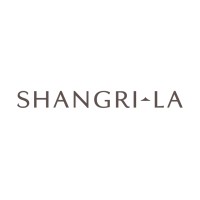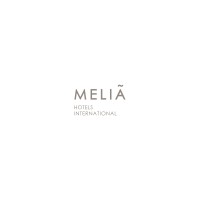
Kempinski Hotels Company Cyber Security Posture
kempinski.jobsFounded in Germany in 1897, Kempinski Hotels has long reflected the finest traditions of European hospitality. Today, as ever, Kempinski is synonymous with distinctive luxury. Located in many of the world's most well-known cities and resorts, the Kempinski collection includes hotels in a grand manner, pace-setting modern establishments and older hotels of individual charm. All blend gracefully into their surroundings and offer luxurious accommodations, superb cuisine and unrivalled facilities - complemented by impeccable service. For leisure and business guests alike, the name Kempinski has long been synonymous with style, mobility and efficiency. Put simply, they are the first choice for the discerning individual. In addition to operating many of the finest city hotels in the world, Kempinski is a name that can now be found in many exciting resort locations, each combining local flair and ambience with the international standards of service and luxury that Kempinski guests have come to expect. To see all the different Kempinski jobs and apply please go to https://kempinski.jobs
Kempinski Hotels Company Details
kempinski-hotels
10,001+ employees
0
721
Hospitality
kempinski.jobs
Scan still pending
KEM_8328373
In-progress
Between 900 and 1000
This score is AI-generated and less favored by cyber insurers, who prefer the TPRM score.
 Kempinski Hotels Global Score
Kempinski Hotels Global Score.png)

Kempinski Hotels Company Scoring based on AI Models
| Model Name | Date | Description | Current Score Difference | Score |
|---|---|---|---|---|
| AVERAGE-Industry | 03-12-2025 | This score represents the average cybersecurity rating of companies already scanned within the same industry. It provides a benchmark to compare an individual company's security posture against its industry peers. | N/A | Between 900 and 1000 |
Kempinski Hotels Company Cyber Security News & History
| Entity | Type | Severity | Impact | Seen | Url ID | Details | View |
|---|
Kempinski Hotels Company Subsidiaries

Founded in Germany in 1897, Kempinski Hotels has long reflected the finest traditions of European hospitality. Today, as ever, Kempinski is synonymous with distinctive luxury. Located in many of the world's most well-known cities and resorts, the Kempinski collection includes hotels in a grand manner, pace-setting modern establishments and older hotels of individual charm. All blend gracefully into their surroundings and offer luxurious accommodations, superb cuisine and unrivalled facilities - complemented by impeccable service. For leisure and business guests alike, the name Kempinski has long been synonymous with style, mobility and efficiency. Put simply, they are the first choice for the discerning individual. In addition to operating many of the finest city hotels in the world, Kempinski is a name that can now be found in many exciting resort locations, each combining local flair and ambience with the international standards of service and luxury that Kempinski guests have come to expect. To see all the different Kempinski jobs and apply please go to https://kempinski.jobs
Access Data Using Our API

Get company history
.png)
Kempinski Hotels Cyber Security News
Compliance Professionals Gather To Address Financial Crime, Cybersecurity, AI Governance
The inaugural Executive Forum on Strategic Compliance (West Africa) will convene senior executives, board members, legal professionals, ...
CAISEC’25 To Launch Fourth Edition On May 25 Under The Auspices Of The Prime Minister
Mercury Communications has announced the fourth edition of the Cyber and Information Security Exhibition and Conference (CAISEC'25) the most ...
Kempinski Hotels: Engaging guests through technology
Khaled Koro, IT Manager for Kempinski Hotel Gold Coast City, discusses how technology will support the group to deliver exceptional customer ...
Walk in: The Adlon is just a "touch" away - Hotel Adlon Kempinski Berlin launches augmented reality app
"Far Away, So Close!" - this is the title of an iconic film by Werner Herzog about Berlin. However, it could also be used today as a ...
Kempinski Launches 7Pines Kempinski Luxury Hotel Brand
As Europe's oldest luxury hotel group, Kempinski Hotels has 78 hotels in 34 countries and stands for the highest standards of quality and ...
Balancing guest privacy and personalization can be tricky. Here’s how to get it right.
Guests have become increasingly concerned about digital privacy and tend to be well-informed about data collection practices. Whether traveling ...
Hotel WiFi across MENA compromised and exposing private data
Cybersecurity researcher uncovers faulty system used by hotels in the Middle East surrendering personal information on millions of guests ...
Kempinski’s ‘Lady In Red’ Features Local Culture Through Fashion
When it comes to the "lady in red" in pop culture, it's always a standout moment. Now, one hotel is offering a way of storytelling local ...
Ghana gains bid to host maiden global cyber conference
"Ghana's selection to host the GC3B demonstrates the country's hard work and dedication to building a safe and resilient digital ecosystem," the ...

Kempinski Hotels Similar Companies

Shangri-La Group
Headquartered in Hong Kong SAR, the Shangri-La Group has grown from a single hotel business to a diverse and integrated global portfolio comprising quality real estate and investment properties, wellness and lifestyle facilities. Today, the Group owns, operates and manages 100+ hotels under our fami

Hilton Alexandria Mark Center
Located on the West End of Historic Alexandria, adjacent to the Winkler Botanical Preserve and minutes from Old Town Alexandria, on a serene lake surrounded by landscaped gardens, sits the Hilton Alexandria Mark Center. Owned by a private investment fund advised by Crow Holdings Capital Partners,

Radisson Blu
Welcome to the official page for Radisson Blu, a brand of Radisson Hotel Group. Stylish living spaces for business and leisure in some of the world’s favorite destinations. Choose stylish and elegant hotels that are created with you in mind. Enjoy a warm welcome with our inviting ambience and though

Meliá Hotels International
Welcome to Meliá Hotels International! From Mallorca to the world, our story is an exciting journey that began more than six decades ago and has led us to become one of the largest hotel chains on the planet and the most sustainable in Europe (S&P Global). With more than 400 hotels across the worl

Accor
We are Accor We are more than 290,000 hospitality experts placing people at the heart of what we do, creating emotion for our guests, and nurturing passion for service and achievement beyond limits. Building on the strength of our teams and of our fully integrated ecosystem of leading brands, perso

Jin Jiang International Hotel Group
Jin Jiang International Hotel group is the largest hotel owner and operator of 460 hotels and 80,000 rooms across China. The breadth of portfolio range from budget, economy to upscale and heritage hotels. Jin Jiang International Hotel Group is a business unit of Jin Jiang International, one of Ch

Frequently Asked Questions
Explore insights on cybersecurity incidents, risk posture, and Rankiteo's assessments.
Kempinski Hotels CyberSecurity History Information
How many cyber incidents has Kempinski Hotels faced?
Total Incidents: According to Rankiteo, Kempinski Hotels has faced 0 incidents in the past.
What types of cybersecurity incidents have occurred at Kempinski Hotels?
Incident Types: The types of cybersecurity incidents that have occurred include .
Incident Details
What are the most common types of attacks the company has faced?
Additional Questions
What Do We Measure?
















Every week, Rankiteo analyzes billions of signals to give organizations a sharper, faster view of emerging risks. With deeper, more actionable intelligence at their fingertips, security teams can outpace threat actors, respond instantly to Zero-Day attacks, and dramatically shrink their risk exposure window.
These are some of the factors we use to calculate the overall score:
Identify exposed access points, detect misconfigured SSL certificates, and uncover vulnerabilities across the network infrastructure.
Gain visibility into the software components used within an organization to detect vulnerabilities, manage risk, and ensure supply chain security.
Monitor and manage all IT assets and their configurations to ensure accurate, real-time visibility across the company's technology environment.
Leverage real-time insights on active threats, malware campaigns, and emerging vulnerabilities to proactively defend against evolving cyberattacks.




